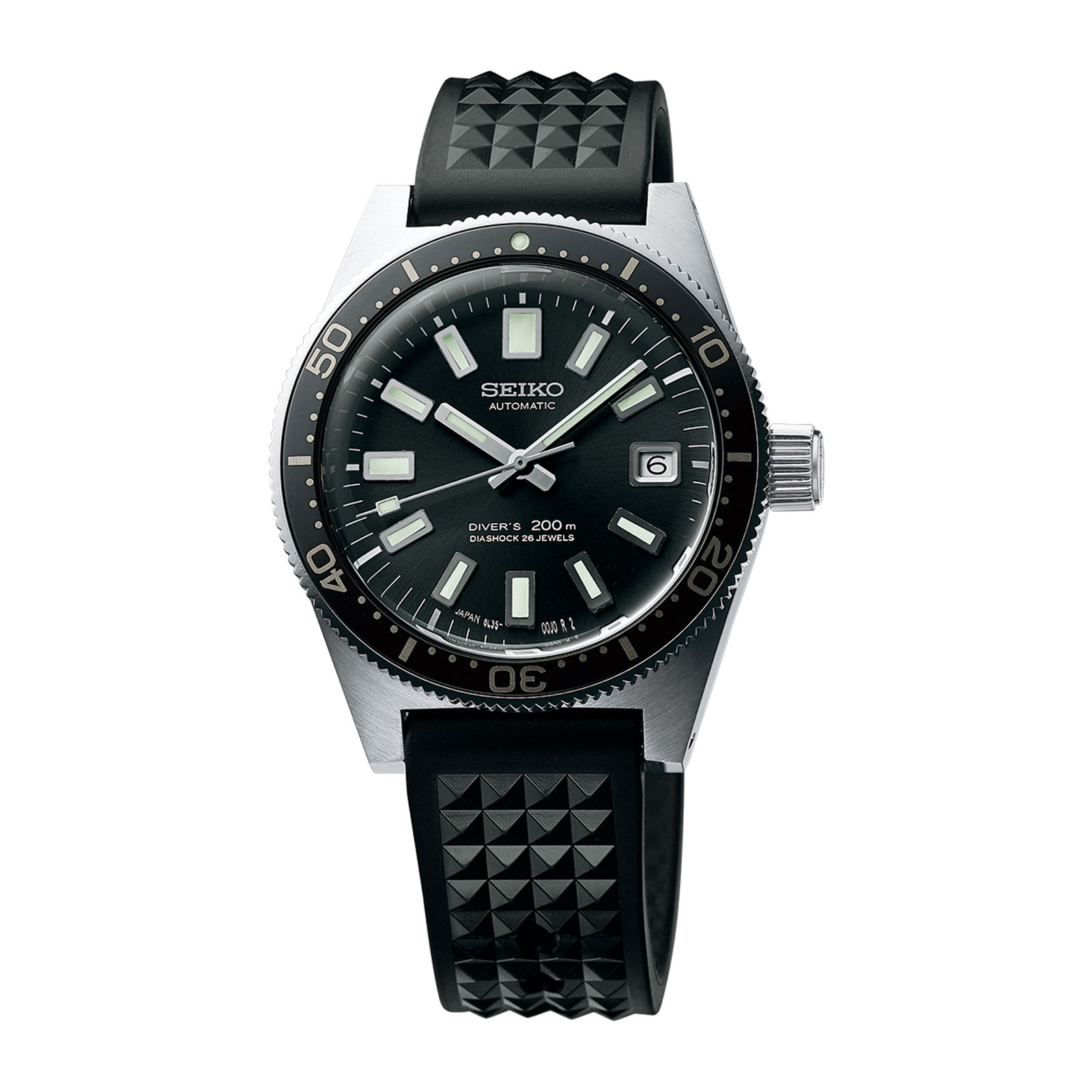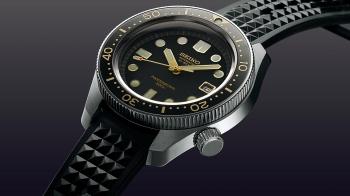Modern watchmaking was born from the sea, on the first ships that set out to explore what was still a flat planet.
Still today, now that this connection has been diluted under the pressure of technology, the relationship between watches and the ocean continues to fascinate people. Why? Why are we so fascinated by diver’s watches? Why does the word "professional" added to the dial cause so much excitement? Why, when so few of us actually dive below a few metres, do we look for a watch that can dive much deeper into the abyss than anyone has ever dived before?
Let’s try to understand what ties us so closely to the sea, and why diver’s watches are so indispensable. First there is the dream, adventure, escape. The sea remains one of the last mostly unexplored areas on the planet. In a world where information spreads so quickly, the thought that we are surrounded by the unknown fascinates us. And if this unknown is inaccessible to most of us, the diver’s watch allows us to dream.
What’s more, in an era of control and surveillance, the sea seems to be an area of freedom. To dive without scuba gear, to swim with the fish, to get carried away by the elements is an immense luxury in our over-connected age.
Last but not least, showing an interest in an object that has become superfluous goes beyond mere nostalgia. This interest seems to bring us back to something that is real and that endures. Otherwise, why would people be so interested in vintage diver’s watches?
Diver’s watches are one of the cornerstones of the watch industry.
Try to think of a brand that does not have a diver’s watch in its collection. A. Lange & Söhne springs to mind, but the list almost stops there. Even if the list is long, not all diver’s watches are equal in the eyes of collectors. There are the authentic, the tattooed and those that pretend.
The first category is a rather exclusive club. Because it includes the brands that invented the diver’s watch. They tried, they failed, they sensed the importance that the ocean would play in their development. In short, they showed flair and consistency.
How many are there? There is Rolex, of course, which probably invented most of what we consider to be diver’s watch related. But there is also Omega, Doxa, Blancpain and Seiko, which I will come back to later. All of these brands have accompanied the most significant submarine adventures. They have been where we will never be able to go. They have all brought back dreams with them.
And now we wear them on our wrists…
Why Seiko?
This brand is fascinating. It invented the column-wheel chronograph movement 20 years before Swiss brands started using the technology. It went to space on the wrist of Colonel Pogue (on the Skylab mission). It was worn by James Bond, fought against Predator and against Alien (on the wrist of Sigourney Weaver).
It waged war in Vietnam, overcame Colonel Kurtz on the wrist of Major Willard (Apocalypse Now). It was worn by RAF pilots but also by the King of Thailand (Rama 9). And it’s of no interest to footballers or rappers because it combines discretion and quality with a reasonable price.
The company is totally vertically integrated to the point of producing its own lubricants. All ll its watches have used in-house movements since long before this term became overused. And, of course, it invented quartz watches and almost killed off the Swiss watch industry… All that deserves respect.
So there is a lot to say about Seiko.
But the matter at hand is the ocean…
Let’s start by stating the obvious: Switzerland has no connection with the sea. Japan is an archipelago.
The history of the Japanese diver’s watch starts in 1965 with Seiko’s first attempt to produce a diver’s watch worthy of the name. It was the 62 MAS – autoMAtic Selfdater (reference 6217-800), celebrated last year with a re-edition (SLA 017). It’s a beautiful watch, but its design is closer to that of a “leisure” diver’s watch.

To be credible, Seiko needed a watch that could meet the requirements of professionals.
The teams at Seiko came up with the 6215 in 1967. It defined the Seiko style for years to come. It was succeeded by the fascinating 6159 – 7010 Tuna Can, whose design continues to stand out nearly 40 years later.
Multiple versions of professional and leisure diver’s watches followed. Their exploits became legendary and earned them a number of nicknames among collectors.
Welcome to the world of the Gold Tuna, Samurai, Shogun, Tuna Can, Monster and Turtle …
The Seiko SLA 025 – Godzilla is back!
So here we are with the Seiko SLA 025. The watch was presented in 2018 as a faithful re-edition of what was – almost – Seiko’s first professional diver’s watch.
Why “almost”?
As mentioned above, Seiko shook the diving community in 1967 with the Reference 6215, a watch that would revolutionize the brand. With this model, Seiko wanted to show what its watchmakers and engineers were capable of.
The 6215 was the first Seiko diver’s watch to be fitted with the crown at 4 o’clock, which went on to become a signature of the brand. The location was supposed to protect the crown better than the crown protector used by Swiss watches.
Seiko also chose a monobloc design; there was no screw-in or clip-on case back. The case is a single piece of metal with a very surprising flat back. The movement, dial and crystal are fitted "from above". This makes it more water resistant and removes the need for a helium escape valve. In 1970, Omega chose a similar technology for its Ploprof.
But the 6215 was only produced for a year, making way for the 6159-7000 in 1968.

The 6159 is almost identical to the 6215, but it was powered by an in-house Hi-Beat (high frequency) movement that had been specially strengthened to meet the needs of a tool watch for professional use. It was also the first Seiko diver’s watch to have the word “Professional” on its black dial. The dial also bore the famous SUWA logo, which indicated that it was produced at the brand’s legendary production site.
It graduated bezel was black and the numerals gilt, another signature of Seiko. The dial was simple, legible and its luminescence was among the best of its era.
It was offered with a black rubber strap and another in… orange.
This model was only produced for three years, and there were some problems with its water resistance. Because of their short production runs the 6215 and 6159 are highly sought after among collectors.
This is why “seikoholics” were jittery with excitement when the brand announced a re-edition at Baselworld 2018.
So here it is, the SLA 025 …

As anticipated, the SLA 025 is almost identical to the 6159 from 1968. We find everything that gave the original model its charm: monobloc design, flat case back, a movement derived from a Grand Seiko Hi-Beat (like the 6159) and the dial is similar, with the exception of the Suwa logo.
Over the years, the SLA 025 has put on a little weight and is a millimetre wider than its predecessor in diameter. It is also slightly thicker. But the way in which the case has been designed, with short lugs, makes the watch look much smaller than it actually is. Although it has a diameter of 44.8mm, it wears more like a 42mm watch.
The hands are slender but legible and the seconds hand uses the “paddle” design with a red dot, which is another nice reference to the past.
The watch is offered with a “waffle” rubber strap, which is yet another nod to the glory days of professional diver’s watches.
In short, with the SLA 025 Seiko is not changing a winning (and charming) team. If you are looking to stand out among the (too) many diver’s watches that mimic the Rolex Submariner, the Seiko SLA is the perfect choice, and you will not be disappointed. But be warned: it is a limited edition of 1,500 and fans of the brand are already fighting over it.
What does the devil’s advocate think?
The world is not perfect and this also applies to watches. If I had to criticize something about the Seiko SLA 025, it would be the larger size. It’s not a big issue but keeping the original dimensions would not have been either…
Then there is the strap.
For those who have a small wrist (17cm or less), this strap is too long and doesn’t look so good when the watch is on the wrist. Seiko could also have given the SLA 025 the (rare) orange strap that came with its beautiful ancestor. I would therefore strongly encourage those who buy an SLA 025 to head over to Uncle Seiko, where they will find solutions to this problem. The “tire tread” strap is perfect for this watch.
Finally, for a watch in this price range (USD 5400 / Euros 5500), I would have welcomed some more thought for the packaging. But we know that Seiko has always had a minimalist approach to such "accessories", and the brand makes no exception to that rule here.
And now, how should you wear this Seiko SLA 025 with some Japanese style?
This Seiko is a diver’s watch, so it’s perfect for summer.
Solid and precise, but also amusing, off-beat and unusual thanks to the design of its case and bezel, which alternate between black and gold, it deserves to be shown off. Just like any other watch with vintage inspiration it will be at ease on the beach or in the office, providing that you “own” it.
A shirt from the Japanese brand Ring Jacket, jeans from the Studio d’Artisan (also made in Japan!) and a nice pair of Onitsuka Mexico 66 sneakers would match perfectly with your Seiko SLA 025.
For a more formal look, add a Beams blazer and swap the sneakers for a pair of Otsuka shoes, in particular those in the Shoten range (which you can try on at Isetan Shinjuku in Tokyo).
As for the watch, pair it with a khaki NATO strap with gilt buckles (to match the colour of the bezel and hour markers), or one of the above-mentioned straps.
Be careful, however, because like on a lot of Seikos, the distance between the lugs is 19mm. Some 20mm straps might work, but I recommend that you go for the right size from the outset.
If you are willing to take some risks, you will find on the internet some photos of a vintage 6215 on an alligator BUND strap. It’s a surprising combination, to say the least, but one that is also quite tempting…
Once you are ready, head out to discover Tokyo, and don’t forget to visit one of the city’s numerous vintage watch stores. In a showcase in a store hidden on the 8th floor of a church (Lemon in Ginza), you may even find some original 6215s or 6159s. But if so, expect to pay a lot more than the price of this re-issue.
They are rare and beautiful.





